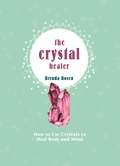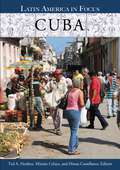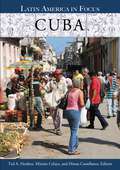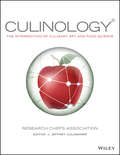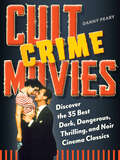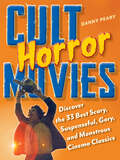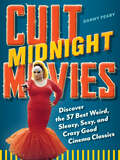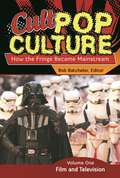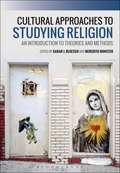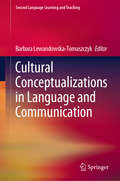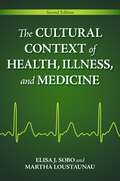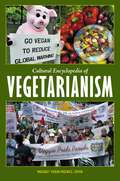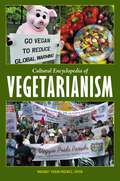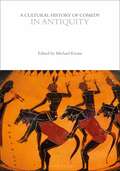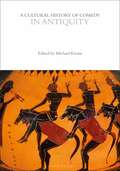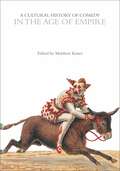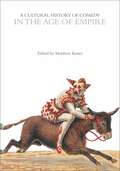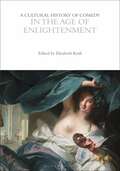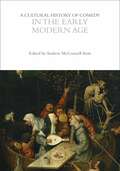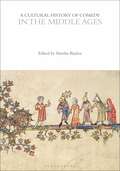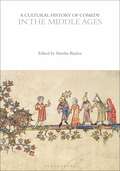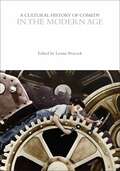- Table View
- List View
The Crystal Healer: Unlock the Ancient Power of Precious Stones
by Brenda RosenHarness the power of crystals to heal promote physical wellbeing, balance your emotions and achieve spiritual harmony.Beautiful and mysterious, crystals have been used for thousands of years for decoration, adornment, protection and healing, but they are so much more than beautiful objects. When crystals are formed, tremendous heat and pressure arranges their molecules into a regular pattern and this sacred geometry is what gives crystals their unique ability to absorb, store, generate and transmit energy. Working with crystals can therefore help us amplify, direct and balance the flow of our life-force in our bodies and surroundings.The Crystal Healer is your introduction to everything you need to know to get started with crystals so that you can benefit from the gentle natural healing properties of crystals.Discover 20 practical exercises to use crystals to improve your health, balance your emotions and find peace and harmony. Learn how to:- Choose and care for crystals, from selecting crystals for the colours, shapes and properties that best suit your needs to cleansing your crystals between uses- Connect with your chakras, helping you to balance and heal your chakras and connect with and heal specific parts of your body,- Promote physical wellbeing with exercises that help with pain relief, clearing nasal congestions, soothing sore throats, improving digestion, addressing hormonal imbalances, strengthening immune systems, improving sleep and detoxifying the body- Regulate your emotions with exercises that ease stress, combat anxiety and depression, release fears and phobias, push out anger and draw in forgiveness, clear brain fog and ease heartache- Reach for spiritual harmony by using crystals to enhance your intuition, guide your meditations and improve your ability to recall and decode your dreams
Cuba (Latin America in Focus)
by Ted A. Henken Miriam Celaya Dimas CastellanosWritten by some of the best-known independent scholars, citizen journalists, cyber-activists, and bloggers living in Cuba today, this book presents a critical, complete, and unbiased overview of contemporary Cuba.In this era of ever-increasing globalization and communication across national borders, Cuba remains an isolated island oddly out of step with the rest of the world. And yet, Cuba is beginning to evolve via the important if still insufficient changes instituted by Raul Castro, who became president in 2008. This book supplies a uniquely independent, accurate, and critical perspective in order to evaluate these changes in the context of the island's rich and complex history and culture. Organized into seven topical chapters that address geography, history, politics and government, economics, society, culture, and contemporary issues, readers will gain a broad, insightful understanding of one of the most unusual, fascinating, and often misunderstood nations in the Western Hemisphere.
Cuba: Its People, Its Society, Its Culture (Latin America in Focus)
by Ted A. Henken Miriam Celaya González Dimas C. Castellanos Martí Armando Chaguaceda Oscar Espinosa Chepe Henry Constantín Regina Coyula Fernándo Dámaso Reinaldo Escobar Dayrom Gil Marlene Azor Hernández Maritza de los Ángeles Hidalgo-Gato Lima Rogelio Fabio Hurtado César Leal Jiménez Miriam Leiva Orlando Luis Pardo Lazo Yoani Sánchez Miguel Iturria Savón Wilfredo VallínWritten by some of the best-known independent scholars, citizen journalists, cyber-activists, and bloggers living in Cuba today, this book presents a critical, complete, and unbiased overview of contemporary Cuba.In this era of ever-increasing globalization and communication across national borders, Cuba remains an isolated island oddly out of step with the rest of the world. And yet, Cuba is beginning to evolve via the important if still insufficient changes instituted by Raul Castro, who became president in 2008. This book supplies a uniquely independent, accurate, and critical perspective in order to evaluate these changes in the context of the island's rich and complex history and culture. Organized into seven topical chapters that address geography, history, politics and government, economics, society, culture, and contemporary issues, readers will gain a broad, insightful understanding of one of the most unusual, fascinating, and often misunderstood nations in the Western Hemisphere.
Culinology: The Intersection of Culinary Art and Food Science
by Research Chefs AssociationCulinology: The Intersection of Culinary Art and Food Science will demonstrate how the disciplines of culinary arts and food science work hand in hand in the research and development of new manufactured food products for the commercial, retail, and foodservice industries. It will be the authoritative source that will add value and relevance to this growing discipline and its practitioners. Integrating culinary arts with food science and technology, this book provides the best strategy for developing successful food products on a large scale. Real-world applications and business models ground the book and clearly illustrate how the concepts and theories work in business and industry.
Cult Crime Movies: Discover the 35 Best Dark, Dangerous, Thrilling, and Noir Cinema Classics (Cult Movies)
by Danny PearyKiss Me, Deadly to Nightmare Alley to The Honeymoon Killers to The American Friend—any fan of crime films will tell you there&’s a palpable excitement in living vicariously through the corrupt, seductive, and often downright evil characters that inhabit these shadowy worlds. In this collection of 35 essays drawn from his revered Cult Movies series, cult film specialist Danny Peary examines, dissects, defends, and exalts crime films from his unique and engaging perspective. His writing is a cornerstone of the cult film culture that continues to flourish today. New to this ebook series are Danny Peary&’s cult movie checklists for each genre. Every crime fan will walk away with newly discovered gems to watch, and a newfound appreciation of his or her favorites.
Cult Horror Movies: Discover the 33 Best Scary, Suspenseful, Gory, and Monstrous Cinema Classics (Cult Movies)
by Danny PearyThe Bride of Frankenstein to House of Wax to The Texas Chain Saw Massacre to The Brood—horror is a beloved and multifaceted genre, with no two classics truly alike. And almost all of them—great and not-so-great—inspire the kind of passion that only cult films truly reach. In this collection of 33 essays drawn from his revered Cult Movies series, cult film specialist Danny Peary examines, dissects, defends, and exalts horror films from his unique and engaging perspective. His writing is a cornerstone of the cult film culture that continues to flourish today. New to this ebook series are Danny Peary&’s cult movie checklists for each genre. Every horror fan will walk away with newly discovered gems to watch, and a newfound appreciation of his or her favorites.
Cult Midnight Movies: Discover the 37 Best Weird, Sleazy, Sexy, and Crazy Good Cinema Classics
by Danny PearyEraserhead to Blue Velvet to The Rocky Horror Picture Show to Harold and Maude—midnight movies keep you up way past your bedtime, whether you&’re curled up on the couch or in a theater full of like-minded enthusiasts. They invoke responses ranging from &“Why am I watching this?&” to &“I can&’t believe I&’m watching this!&” In this collection of 37 essays drawn from his revered Cult Movies series, cult film specialist Danny Peary examines, dissects, defends, and exalts midnight movies from his unique and engaging perspective. His writing is a cornerstone of the cult film culture that continues to flourish today. New to this ebook series are Danny Peary&’s cult movie checklists for each genre. Every midnight movie fan will walk away with newly discovered gems to watch, and a newfound appreciation of his or her favorites.
Cult Pop Culture [3 volumes]: How the Fringe Became Mainstream [3 volumes]
by Bob. BatchelorThis three-volume collection of original essays examines cult pop culture, the often-seedy underbelly of American popular culture.Cult Pop Culture: How the Fringe Became Mainstream is the first collection dedicated to the quirky, offbeat aspects of American popular culture that people have loved, enjoyed, (and in some cases) worshiped over the last 50 years. By examining the people and subjects we hold most dear, this three-volume set offers deep insights into what Americans think, feel, and cherish.Organized by subject, the collection enables readers to focus on a given topic or compare different subjects across cult phenomenon. Volume One of the set covers film and television topics, Volume Two examines music and literature, and Volume Three explores sports, clubs, and the cult industry. Through this investigation of sublime, transcendent, and idiosyncratic trends, readers will learn more about iconic individuals, topics, and subjects that form the vast underbelly of American culture. By revealing how tightly interwoven cult topics are with the public's broader notion of popular culture, the collection underscores the blurry line between normal and abnormal, grandiose and degradation.
Cultural Approaches to Studying Religion: An Introduction to Theories and Methods
by Sarah J. Bloesch Meredith MinisterThis is the first book to provide an introduction to contemporary cultural approaches to the study of religion. This book makes sophisticated ideas accessible at an introductory level, and examines the analytic tools of scholars in religious studies, as well as in related disciplines that have shaped the field including anthropology, history, literature, and critical studies in race, sexuality, and gender. Each chapter is written by a leading scholar and includes: · the biographical and historical context of each theorist· their approaches and key writings· analysis and evaluation of each theory · suggested further reading.Part One: Comparative Approaches considers how major features such as taboo, texts, myths and ritual work across religious traditions by exploring the work of Mary Douglas, Phyllis Trible, Wendy Doniger and Catherine Bell. Part Two: Examining Particularities analyzes the comparative approach through the work of Alice Walker, Charles Long and Caroline Walker Bynum, who all suggest that the specifics of race, body, place and time must be considered. Part Three: Expanding Boundaries examines Gloria Anzaldúa's language of religion, as well as the work of Judith Butler on performative, queer theories of religion, and concludes with Saba Mahmood, whose work considers postcolonial religious encounters, secularism, and the relationship between “East” and “West.” Reflecting the cultural turn and challenging the existing canon, this is the anthology instructors have been waiting for.For primary texts by the theorists discussed, please consult The Bloomsbury Reader in Cultural Approaches to the Study of Religion, edited by Sarah J. Bloesch and Meredith Minister.
Cultural Approaches to Studying Religion: An Introduction to Theories and Methods
by Sarah J. Bloesch Meredith MinisterThis is the first book to provide an introduction to contemporary cultural approaches to the study of religion. This book makes sophisticated ideas accessible at an introductory level, and examines the analytic tools of scholars in religious studies, as well as in related disciplines that have shaped the field including anthropology, history, literature, and critical studies in race, sexuality, and gender. Each chapter is written by a leading scholar and includes: · the biographical and historical context of each theorist· their approaches and key writings· analysis and evaluation of each theory · suggested further reading.Part One: Comparative Approaches considers how major features such as taboo, texts, myths and ritual work across religious traditions by exploring the work of Mary Douglas, Phyllis Trible, Wendy Doniger and Catherine Bell. Part Two: Examining Particularities analyzes the comparative approach through the work of Alice Walker, Charles Long and Caroline Walker Bynum, who all suggest that the specifics of race, body, place and time must be considered. Part Three: Expanding Boundaries examines Gloria Anzaldúa's language of religion, as well as the work of Judith Butler on performative, queer theories of religion, and concludes with Saba Mahmood, whose work considers postcolonial religious encounters, secularism, and the relationship between “East” and “West.” Reflecting the cultural turn and challenging the existing canon, this is the anthology instructors have been waiting for.For primary texts by the theorists discussed, please consult The Bloomsbury Reader in Cultural Approaches to the Study of Religion, edited by Sarah J. Bloesch and Meredith Minister.
Cultural Conceptualizations in Language and Communication (Second Language Learning and Teaching)
by Barbara Lewandowska-TomaszczykThe book comprises a selection of papers concerning the general theme of cultural conceptualizations in language. The focus of Part 1, which includes four papers, is on Metaphor and Culture, discussing general as well as language-specific metaphoricity.Part 2, which also includes three papers, is on Cultural Models, dealing with phenomena relating to family and home, nation and kinship, blood, and death in different cultures. Six papers in Part 3, which refers to questions of Identity and Cultural Stereotypes, both in general language and in literature, discuss identity in native and migration contexts and take up motifs of journey and migration, as well as social and cultural stereotypes and prejudice in transforming contexts. Three papers in the last Part 4 of the book, Linguistic Concepts, Meanings, and Interaction, focus on the semantic interpretation of the changes and differences which occur in their intra- as well as inter-linguistic contexts.
The Cultural Context of Health, Illness, and Medicine: Second Edition
by Elisa J. Sobo Martha Oehmke LoustaunauA "one size fits all" approach to health care doesn't work well, especially for America's extremely diverse population. This book provides a lively and accessible discussion of how and why a more flexible and culturally sensitive system of health care can—and must be—achieved.Notable anthropologist George Foster defined the first edition as "a very readable introductory text dealing with the sociocultural aspects of health," adding: "[T]he authors do a commendable job… . I have profited from reading The Cultural Context of Health, Illness, and Medicine". With engaging examples, minimal jargon, and updated scholarship, the second edition of The Cultural Context of Health, Illness, and Medicine offers a comprehensive guide to the practice of culturally sensitive health care. Readers will see America's biomedically dominated health care system in a new light as the book reveals the changes wrought by increasing cultural diversity, technological innovation, and developments in care delivery.Written by a sociologist and an anthropologist with direct, hands-on experience in the health services, the volume tracks culture's influence on and relationship to health, illness, and health-care delivery via an examination of social structure, medical systems, and the need for—and challenges to—culturally sensitive care. Cultural differences are situated against social-class differences and related health inequities, as well as different needs and challenges throughout the life course. In prescribing caring that is more holistic, culturally sensitive, and cost-effective, the work promotes awareness of pressing issues for health care professionals—and the people they serve.
Cultural Encyclopedia of Vegetarianism
by Margaret Puskar-PasewiczIntended for students, general readers, vegetarians, and vegans, as well as those interested in animal welfare and liberation, this A–Z encyclopedia explores the historical and cultural significance of vegetarianism in the United States and beyond.Vegetarianism in the United States did not start in the 1960s—it has a much longer, complex history going back to the early 1800s. Cultural Encyclopedia of Vegetarianism examines that history through the lens of culture, focusing on what vegetarianism has had to say to and about Americans. This A–Z encyclopedia brings together the work of a number of scholars from diverse fields, including history, sociology, philosophy, religious studies, anthropology, nutrition, American studies, religious studies, women's and gender history, and the history of medicine. Approximately 100 essay entries cover cultural and historical aspects of vegetarianism, primarily but not exclusively in relation to the United States, shedding light on the practice's roots in ancient cultures and challenging popular myths and misconceptions related to both vegetarianism and veganism. With discussions on everything from activist movements to cookbooks, the encyclopedia offers a unique, wide-ranging exploration that will appeal to students, practitioners, and anyone else who wants to know more.
Cultural Encyclopedia of Vegetarianism
by Margaret Puskar-PasewiczIntended for students, general readers, vegetarians, and vegans, as well as those interested in animal welfare and liberation, this A–Z encyclopedia explores the historical and cultural significance of vegetarianism in the United States and beyond.Vegetarianism in the United States did not start in the 1960s—it has a much longer, complex history going back to the early 1800s. Cultural Encyclopedia of Vegetarianism examines that history through the lens of culture, focusing on what vegetarianism has had to say to and about Americans. This A–Z encyclopedia brings together the work of a number of scholars from diverse fields, including history, sociology, philosophy, religious studies, anthropology, nutrition, American studies, religious studies, women's and gender history, and the history of medicine. Approximately 100 essay entries cover cultural and historical aspects of vegetarianism, primarily but not exclusively in relation to the United States, shedding light on the practice's roots in ancient cultures and challenging popular myths and misconceptions related to both vegetarianism and veganism. With discussions on everything from activist movements to cookbooks, the encyclopedia offers a unique, wide-ranging exploration that will appeal to students, practitioners, and anyone else who wants to know more.
A Cultural History of Comedy in Antiquity (The Cultural Histories Series)
by Andrew McConnell Stott Eric WeitzDrawing together contributions from scholars in a wide range of fields inside Classics and Drama, this volume traces the development of comedic performance and examines the different characteristics of Greek and Roman comedy. Although the origins of comedy are obscure, this study argues that comedic performances were at the heart of Graeco-Roman culture from around 486 BCE to the mid first century BCE. It explores the range of comedies during this period, which were fictional dramas that engaged with the political and social concerns of ancient society, and also at times with mythology and tragedy.The volume centres largely around the surviving work of Aristophanes and Menander in Athens, and Plautus and Terence in Rome, but authors whose plays survive only in fragments are also discussed. Performances and plays drew on a range of forms, including satire and fantasy, and were designed to entertain and amuse their audiences while also asking them to question issues of morality, privilege and class. Each chapter takes a different theme as its focus: form, theory, praxis, identities, the body, politics and power, laughter and ethics. These eight different approaches to ancient comedy add up to an extensive, synoptic coverage of the subject.
A Cultural History of Comedy in Antiquity (The Cultural Histories Series)
by Andrew McConnell Stott Eric WeitzDrawing together contributions from scholars in a wide range of fields inside Classics and Drama, this volume traces the development of comedic performance and examines the different characteristics of Greek and Roman comedy. Although the origins of comedy are obscure, this study argues that comedic performances were at the heart of Graeco-Roman culture from around 486 BCE to the mid first century BCE. It explores the range of comedies during this period, which were fictional dramas that engaged with the political and social concerns of ancient society, and also at times with mythology and tragedy.The volume centres largely around the surviving work of Aristophanes and Menander in Athens, and Plautus and Terence in Rome, but authors whose plays survive only in fragments are also discussed. Performances and plays drew on a range of forms, including satire and fantasy, and were designed to entertain and amuse their audiences while also asking them to question issues of morality, privilege and class. Each chapter takes a different theme as its focus: form, theory, praxis, identities, the body, politics and power, laughter and ethics. These eight different approaches to ancient comedy add up to an extensive, synoptic coverage of the subject.
A Cultural History of Comedy in the Age of Empire (The Cultural Histories Series)
by Eric Weitz Andrew McConnell StottDrawing together contributions from scholars in a range of fields within 19th- and 20th-century cultural, literary, and theater studies, this volume provides a thorough and varied overview of the many forms comedy took in the 19th century. Given the earth-shattering cultural changes and political events that mark the decades between 1800 and 1920-shifting borders, socioeconomic upheaval, scientific and technological innovation, the rise of consumerism and mass culture, unprecedented overseas expansion by European and American imperial powers-it is no wonder that people in the Age of Empire turned to comedy in order to make sense of the contradictions that structure modern identity and navigate the sociocultural fault lines within modern life. Comical, humorous, and satirical cultural artifacts from the period capture the anxieties and aspirations, the petty resentments and lofty ideals, of a world buffeted by change. This volume explores the aesthetic, political, and ethical dimensions of comedy in the context of blackface minstrelsy, nonsense poetry, music hall and pantomime, comic almanacs and joke books, journalism, silent film, popular novels, and hygiene magazines, among other phenomena. It also provides a detailed account of contentious debates among social Darwinists, psychoanalysts, and political philosophers about the meaning and significance of comedy and laughter to human life.Each chapter takes a different theme as its focus: form, theory, praxis, identity, the body, politics and power, laughter, and ethics. These eight divergent approaches to comedy in the Age of Empire add up to an extensive, synoptic coverage of the subject.
A Cultural History of Comedy in the Age of Empire (The Cultural Histories Series)
by Eric Weitz Andrew McConnell StottDrawing together contributions from scholars in a range of fields within 19th- and 20th-century cultural, literary, and theater studies, this volume provides a thorough and varied overview of the many forms comedy took in the 19th century. Given the earth-shattering cultural changes and political events that mark the decades between 1800 and 1920-shifting borders, socioeconomic upheaval, scientific and technological innovation, the rise of consumerism and mass culture, unprecedented overseas expansion by European and American imperial powers-it is no wonder that people in the Age of Empire turned to comedy in order to make sense of the contradictions that structure modern identity and navigate the sociocultural fault lines within modern life. Comical, humorous, and satirical cultural artifacts from the period capture the anxieties and aspirations, the petty resentments and lofty ideals, of a world buffeted by change. This volume explores the aesthetic, political, and ethical dimensions of comedy in the context of blackface minstrelsy, nonsense poetry, music hall and pantomime, comic almanacs and joke books, journalism, silent film, popular novels, and hygiene magazines, among other phenomena. It also provides a detailed account of contentious debates among social Darwinists, psychoanalysts, and political philosophers about the meaning and significance of comedy and laughter to human life.Each chapter takes a different theme as its focus: form, theory, praxis, identity, the body, politics and power, laughter, and ethics. These eight divergent approaches to comedy in the Age of Empire add up to an extensive, synoptic coverage of the subject.
A Cultural History of Comedy in the Age of Enlightenment (The Cultural Histories Series)
by Eric Weitz Andrew McConnell StottThis volume highlights the variety of forms comedy took in England, with reference to developments in Europe, particularly France, during the European Enlightenment. It argues that comedy in this period is characterized by wit, satire, and humor, provoking both laughter and sympathetic tears. Comic expression in the Enlightenment reflects continuities and engagements with the comedy of previous eras; it is also noted for new forms and preoccupations engendered by the cultural, philosophical, and political concerns of the time, including democratizing revolutions, increasing secularization, and growing emphasis on individualism. Discussions emphasize the period's stage comedy and acknowledge comic expression in various forms of print media including the emerging literary form we now know as the novel. Contributions from scholars reflect a wide variety of interests in the field of 18th-century studies, and the inclusion of a generous number of illustrations throughout demonstrates that the period's visual culture was also an important part of the Enlightenment comic landscape. Each chapter takes a different theme as its focus: form, theory, praxis, identities, the body, politics and power, laughter and ethics. These eight different approaches to Enlightenment comedy add up to an extensive, synoptic coverage of the subject.
A Cultural History of Comedy in the Age of Enlightenment (The Cultural Histories Series)
by Eric Weitz Andrew McConnell StottThis volume highlights the variety of forms comedy took in England, with reference to developments in Europe, particularly France, during the European Enlightenment. It argues that comedy in this period is characterized by wit, satire, and humor, provoking both laughter and sympathetic tears. Comic expression in the Enlightenment reflects continuities and engagements with the comedy of previous eras; it is also noted for new forms and preoccupations engendered by the cultural, philosophical, and political concerns of the time, including democratizing revolutions, increasing secularization, and growing emphasis on individualism. Discussions emphasize the period's stage comedy and acknowledge comic expression in various forms of print media including the emerging literary form we now know as the novel. Contributions from scholars reflect a wide variety of interests in the field of 18th-century studies, and the inclusion of a generous number of illustrations throughout demonstrates that the period's visual culture was also an important part of the Enlightenment comic landscape. Each chapter takes a different theme as its focus: form, theory, praxis, identities, the body, politics and power, laughter and ethics. These eight different approaches to Enlightenment comedy add up to an extensive, synoptic coverage of the subject.
A Cultural History of Comedy in the Early Modern Age (The Cultural Histories Series)
by Andrew McConnell Stott Eric WeitzDrawing together scholars with a wide range of expertise across the early modern period, this volume explores the rich field of early modern comedy in all its variety. It argues that early modern comedy was shaped by a series of cultural transformations that included the emergence of the entertainment industry, the rise of the professional comedian, extended commentaries on the nature of comedy and laughter, and the development of printed jestbooks. It was the prime site from which to satirize a rapidly-changing world and explore the formation of new social relations around questions of gender, authority, identity, and commerce, amongst others. Yet even as it reacted to the novel and the new, comedy also served as a receptacle for the celebration of older social rituals such as May games and seasonal festivities. The result was a complex and contested mix of texts, performances, and concepts providing a deep tradition that abides to this day. Each chapter takes a different theme as its focus: form, theory, praxis, identities, the body, politics and power, laughter and ethics. These eight different approaches to early modern comedy add up to an extensive, synoptic coverage of the subject.
A Cultural History of Comedy in the Middle Ages (The Cultural Histories Series)
by Andrew McConnell Stott Eric WeitzComedy and humor flourished in manifold forms in the Middle Ages. This volume, covering the period from 1000 to 1400 CE, examines the themes, practice, and effects of medieval comedy, from the caustic morality of principled satire to the exuberant improprieties of many wildly popular tales of sex and trickery. The analysis includes the most influential authors of the age, such as Chaucer, Boccaccio, Juan Ruiz, and Hrothswitha of Gandersheim, as well as lesser-known works and genres, such as songs of insult, nonsense-texts, satirical church paintings, topical jokes, and obscene pilgrim badges. The analysis touches on most of the literatures of medieval Europe, including a discussion of the formal attitudes toward humor in Christian, Jewish, and Islamic traditions. The volume demonstrates the many ways in which medieval humor could be playful, casual, sophisticated, important, subversive, and even dangerous.Each chapter takes a different theme as its focus: form, theory, praxis, identities, the body, politics and power, laughter, and ethics.
A Cultural History of Comedy in the Middle Ages (The Cultural Histories Series)
by Andrew McConnell Stott Eric WeitzComedy and humor flourished in manifold forms in the Middle Ages. This volume, covering the period from 1000 to 1400 CE, examines the themes, practice, and effects of medieval comedy, from the caustic morality of principled satire to the exuberant improprieties of many wildly popular tales of sex and trickery. The analysis includes the most influential authors of the age, such as Chaucer, Boccaccio, Juan Ruiz, and Hrothswitha of Gandersheim, as well as lesser-known works and genres, such as songs of insult, nonsense-texts, satirical church paintings, topical jokes, and obscene pilgrim badges. The analysis touches on most of the literatures of medieval Europe, including a discussion of the formal attitudes toward humor in Christian, Jewish, and Islamic traditions. The volume demonstrates the many ways in which medieval humor could be playful, casual, sophisticated, important, subversive, and even dangerous.Each chapter takes a different theme as its focus: form, theory, praxis, identities, the body, politics and power, laughter, and ethics.
A Cultural History of Comedy in the Modern Age (The Cultural Histories Series)
by Andrew McConnell Stott Eric WeitzDrawing together contributions by scholars from a variety of fields, including theater, film and television, sociology, and visual culture, this volume explores the range and diversity of comedic performance and comic forms in the modern age. It covers a range of forms and examples from 1920 to the present day, including plays, film, television comedy, live comedy, and comedy on social media. It argues that the period covered was marked by an explosion of comic forms and a flowering of comic creativity across a range of media. From the communal watching of silent films at the start of the period, to the use of Twitter and other online platforms to share and comment on comedy, technology has brought about significant changes in its form, consumption, and social effects. As comic forms have shifted and developed, so too have attitudes to what comedy can and cannot do. This study considers its role in entertainment and in provoking consideration of a range of social and political topics. Each chapter takes a different theme as its focus: form, theory, praxis, identities, the body, politics and power, laughter, and ethics. These eight different approaches to comedy add up to an extensive, synoptic coverage of the subject.
A Cultural History of Comedy in the Modern Age (The Cultural Histories Series)
by Andrew McConnell Stott Eric WeitzDrawing together contributions by scholars from a variety of fields, including theater, film and television, sociology, and visual culture, this volume explores the range and diversity of comedic performance and comic forms in the modern age. It covers a range of forms and examples from 1920 to the present day, including plays, film, television comedy, live comedy, and comedy on social media. It argues that the period covered was marked by an explosion of comic forms and a flowering of comic creativity across a range of media. From the communal watching of silent films at the start of the period, to the use of Twitter and other online platforms to share and comment on comedy, technology has brought about significant changes in its form, consumption, and social effects. As comic forms have shifted and developed, so too have attitudes to what comedy can and cannot do. This study considers its role in entertainment and in provoking consideration of a range of social and political topics. Each chapter takes a different theme as its focus: form, theory, praxis, identities, the body, politics and power, laughter, and ethics. These eight different approaches to comedy add up to an extensive, synoptic coverage of the subject.
